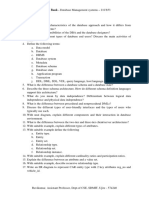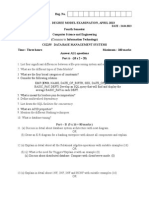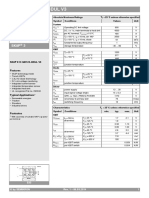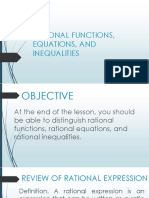0% found this document useful (0 votes)
59 views3 pagesDBMS 22mca21
This document outlines the examination structure for the Second Semester MCA Degree Examination in Database Management Systems, scheduled for June/July 2023. It includes details on the modules, topics covered, and types of questions to be answered, with a focus on various database concepts, SQL queries, normalization, and transaction properties. Students are required to answer five full questions, selecting one from each module.
Uploaded by
lomic31750Copyright
© © All Rights Reserved
We take content rights seriously. If you suspect this is your content, claim it here.
Available Formats
Download as PDF, TXT or read online on Scribd
0% found this document useful (0 votes)
59 views3 pagesDBMS 22mca21
This document outlines the examination structure for the Second Semester MCA Degree Examination in Database Management Systems, scheduled for June/July 2023. It includes details on the modules, topics covered, and types of questions to be answered, with a focus on various database concepts, SQL queries, normalization, and transaction properties. Students are required to answer five full questions, selecting one from each module.
Uploaded by
lomic31750Copyright
© © All Rights Reserved
We take content rights seriously. If you suspect this is your content, claim it here.
Available Formats
Download as PDF, TXT or read online on Scribd
/ 3
























































































